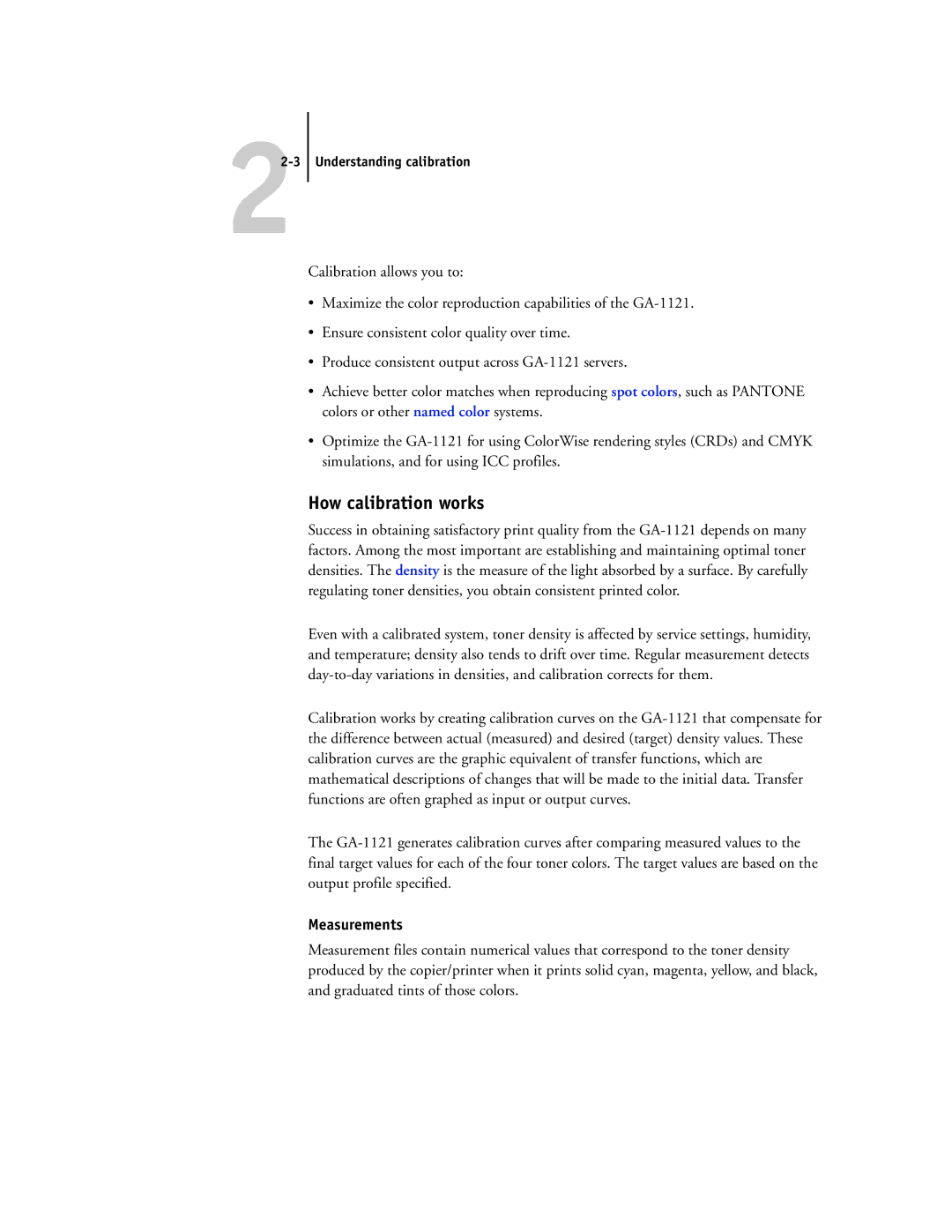Calibration allows you to:
•Maximize the color reproduction capabilities of the GA-1121.
•Ensure consistent color quality over time.
•Produce consistent output across GA-1121 servers.
•Achieve better color matches when reproducing spot colors, such as PANTONE colors or other named color systems.
•Optimize the GA-1121 for using ColorWise rendering styles (CRDs) and CMYK simulations, and for using ICC profiles.
How calibration works
Success in obtaining satisfactory print quality from the GA-1121 depends on many factors. Among the most important are establishing and maintaining optimal toner densities. The density is the measure of the light absorbed by a surface. By carefully regulating toner densities, you obtain consistent printed color.
Even with a calibrated system, toner density is affected by service settings, humidity, and temperature; density also tends to drift over time. Regular measurement detects day-to-day variations in densities, and calibration corrects for them.
Calibration works by creating calibration curves on the GA-1121 that compensate for the difference between actual (measured) and desired (target) density values. These calibration curves are the graphic equivalent of transfer functions, which are mathematical descriptions of changes that will be made to the initial data. Transfer functions are often graphed as input or output curves.
The GA-1121 generates calibration curves after comparing measured values to the final target values for each of the four toner colors. The target values are based on the output profile specified.
Measurements
Measurement files contain numerical values that correspond to the toner density produced by the copier/printer when it prints solid cyan, magenta, yellow, and black, and graduated tints of those colors.
